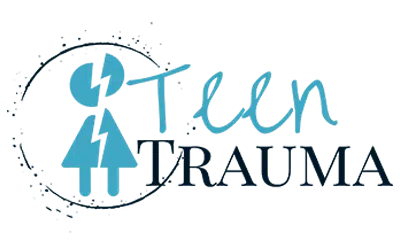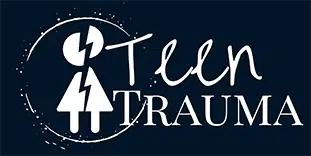Helping Teens Break Free from Trauma Bonds
Teenagers and children of all ages need healthy attachments to their caregivers to develop healthy emotions. Trauma can impact these attachments, making it harder for teens to develop properly.
Although it’s often more common with adults who suffer abuse at the hands of an intimate partner, trauma bonding can occur in teens as well. If you’re trying to help a teenager in your life deal with their own personal trauma, it’s crucial to understand trauma bonding, its symptoms, and how to provide support.
We’ve already discussed how trauma bonds develop in teens and the signs to watch for. Now, let’s take a closer look at what trauma bonding is and how it impacts teens in the long term, especially in their relationships. Find out more about the implications of trauma bonding in our trauma bonding article.
What Is Trauma Bonding?
Trauma bonding is an emotional bond that a victim forms with their abuser. It’s often a bond between intimate partners, but it can also happen between a parent and a child.
When someone is supposed to provide a healthy, stable relationship for another person, but instead inflicts abuse, the victim experiences a unique form of trauma that can contribute to the trauma bond.
Why Trauma Bonds Develop
When someone expects a healthy attachment with another person, such as in the case of a caregiver to a child, but abuse occurs, they experience a fight, flight, or fawn response. This is the brain’s natural way of protecting someone from a perceived threat.
During the fight, flight, or fawn response, the person may reach out to someone else to seek comfort and love. Trauma bonds occur when the person they reach out to is the same person who caused the abuse.
The abused teen develops an attachment to their abuser, and the abuser solidifies that attachment through psychological and emotional manipulation, making the victim even more emotionally connected.
Trauma bonds intensify when the victim feels they can’t leave. In the case of a teen, they may not legally be able to get away from their abuser. It feels safer to continue the attachment rather than emotionally breaking it off when there is no way to get physically safe.
Since abusers of young people are usually authority figures, like parents, teachers, or coaches, trauma bonds, when they develop, are intense.
Long-Term Impact of Trauma Bonds on Teens
If a teen is in a trauma-bonded relationship, they are likely to struggle in various ways. Without proper treatment, these struggles can follow the teen into their adult life, affecting their mental health and future relationships.
The long-term negative effects include:
- Adverse mental health outcomes – Trauma bonds can lead to low self-esteem and a distorted sense of reality.
- Emotional dependence – Teens can develop an unhealthy emotional dependence on their abusers, hindering them from becoming emotionally self-sufficient.
- Co-dependency issues – Future relationships are likely to be co-dependent or trauma-bonded, as this is the pattern of interaction the teen has learned.
- Problems with emotional intimacy – The teen may struggle in future romantic relationships, as they did not learn healthy emotional intimacy as a child.
- Self-harm – The poor attachment formed through trauma bonds can lead teens to self-harm.
- Future abusive relationships – Teens who don’t learn to identify abuse are more likely to end up in abusive relationships in adulthood.
Due to the severity of these long-term effects, it’s essential to provide the right help for a teen dealing with a trauma bond.
How to Help Teens Break a Trauma Bonds
The first step in helping a young person with a trauma bond is to identify it. Once you have done this, consider the following steps:
- Professional Therapy – If you suspect that a teen in your life is trauma-bonded, consider seeking professional therapy and counseling. Therapy needs to come from a trauma-informed perspective. During therapy, help the teen to develop their own interests and skills. Often, trauma-bonded individuals revolve their lives around their abuser and the abuser’s interests. The teen needs to discover who they are apart from this.
- Stop the Relationship – To break the trauma bond, the teen needs to distance themselves from the relationship as much as possible. When feasible, they should cut off all contact with the abuser. For this reason, residential treatment that temporarily removes the abusive person can be extremely beneficial.
- Build Healthy Relationships – To break a trauma bond, teens must learn how to build healthy relationships with safe people. This might be a therapist or a trustworthy caregiver. They need to have someone they can turn to when they feel overwhelmed with emotions to avoid returning to their abuser. The safe person needs to learn to be non-judgmental when the teen opens up to them.
- Teach Signs of Abuse – Teenagers may not naturally recognize the abuse in the relationship that led to the trauma bond. In therapy, they should be taught to recognize abusive behavior. This knowledge will help prevent the recurrence of the trauma bond after therapy ends. Remember, it’s common for the teen to want to reconnect with their abuser, even after cutting off contact, because they crave the affection that was intermittently shown. Demonstrating how ‘love bombing’ and other behaviors are abusive can help prevent this.
- Encourage Autonomy – After the teen has undergone therapy and broken the trauma bond, it’s important to teach them to make decisions for themselves. The abuser in a trauma-bonded relationship is typically a controlling figure. It’s vital to show the teen that they have autonomy over their own decisions. If they make a poor decision, support them in recovering and learning from it. Remember, autonomy is an essential aspect of living a healthy life after enduring abuse.
Although trauma bonding is often discussed in the context of adults, it also happens with teens. The impact can be intense due to the still-developing brain of adolescents.
Remember, helping a teen break a trauma bond takes time. It requires love and patience, and it may require professional help.
If you are working with a teen who is trauma bonded, seeking professional help is crucial.
Struggling with your teen’s trauma bonds? Get them the help they need now. Visit The National Child Traumatic Stress Network and access expert advice to break free from these chains of abuse. If your child is experiencing trauma bonding, contact us for information about treatment! Heal, grow, and flourish together – because you and your loved ones deserve better!










